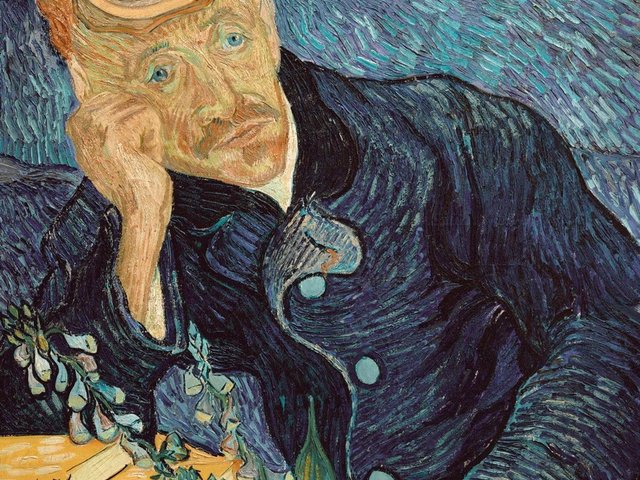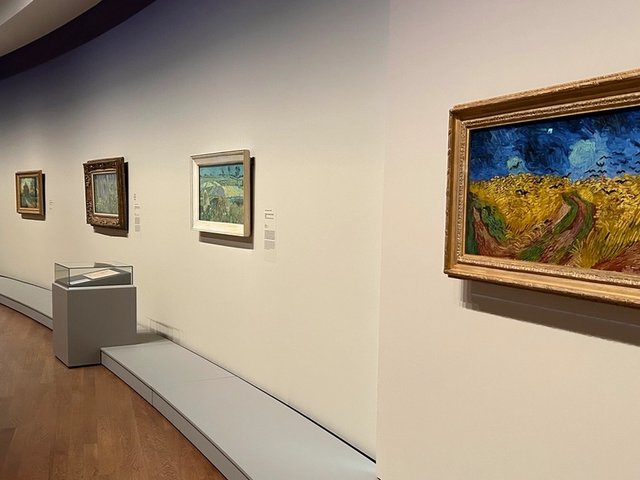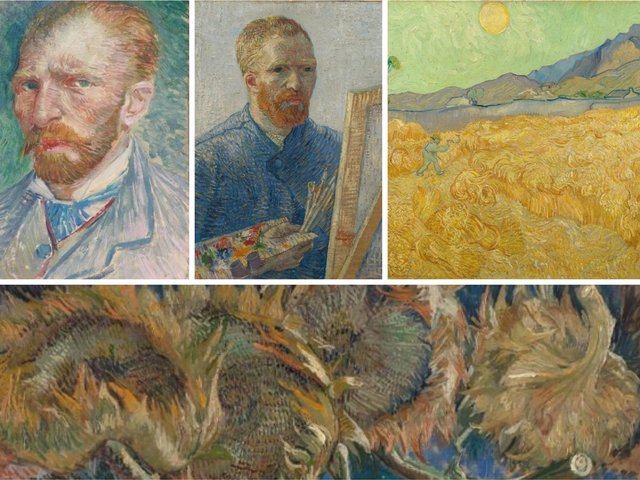Van Gogh’s finest early drawing is of Austin Friars, the church of the Dutch community in the City of London. It was confidently drawn, in ink, and has been held up as an example to show that he could draw proficiently in his early twenties, with a good sense of perspective.
The sketch traditionally had been dated to 1873-76, a period when Van Gogh was living in England. Then aged between 20 and 23, he was initially a trainee art dealer with Goupil, which had a gallery in London. He was later sacked and turned to working as an assistant teacher in small schools.
Van Gogh drew during this period, but only a few works survive and they are fairly crude. Until now Austin Friars Church, London was regarded as the finest.
Austin Friars was then the only Dutch Reformed Church in the UK. The Goupil gallery was in Covent Garden and the church is less than two miles to the east, in the centre of the City. Although there is no suggestion that Van Gogh was a regular attender, it is highly likely that he would have visited the church at least once, either for a service or other event, or simply out of curiosity.
Van Gogh’s drawing Austin Friars Church, London is little known, since it has only been exhibited once in Amsterdam, in 1996. Its first showing and only international outing was to London in 1992, when it went to an exhibition I curated at the Barbican Art Gallery.
On that occasion I commented in the catalogue: “If done on the spot, the sketch is most accomplished”, but “it is possible that the drawing was based on a photograph or illustration (although none has been found which corresponds precisely with this work).”
Discovery of the source
Thirty two years later, that source has now been identified. The discovery was made by the Dutch Van Gogh specialist Ton de Brouwer, who lives in Nuenen, where the artist stayed in 1883-85. He found Van Gogh’s source to be an illustration in the weekly magazine Eigen Haard (Home and Hearth), in the issue of 7 July 1877. His findings have been posted on the Van Gogh Museum website, in an article entitled Discovery Sheds New Light on Origin of Van Gogh Drawing.
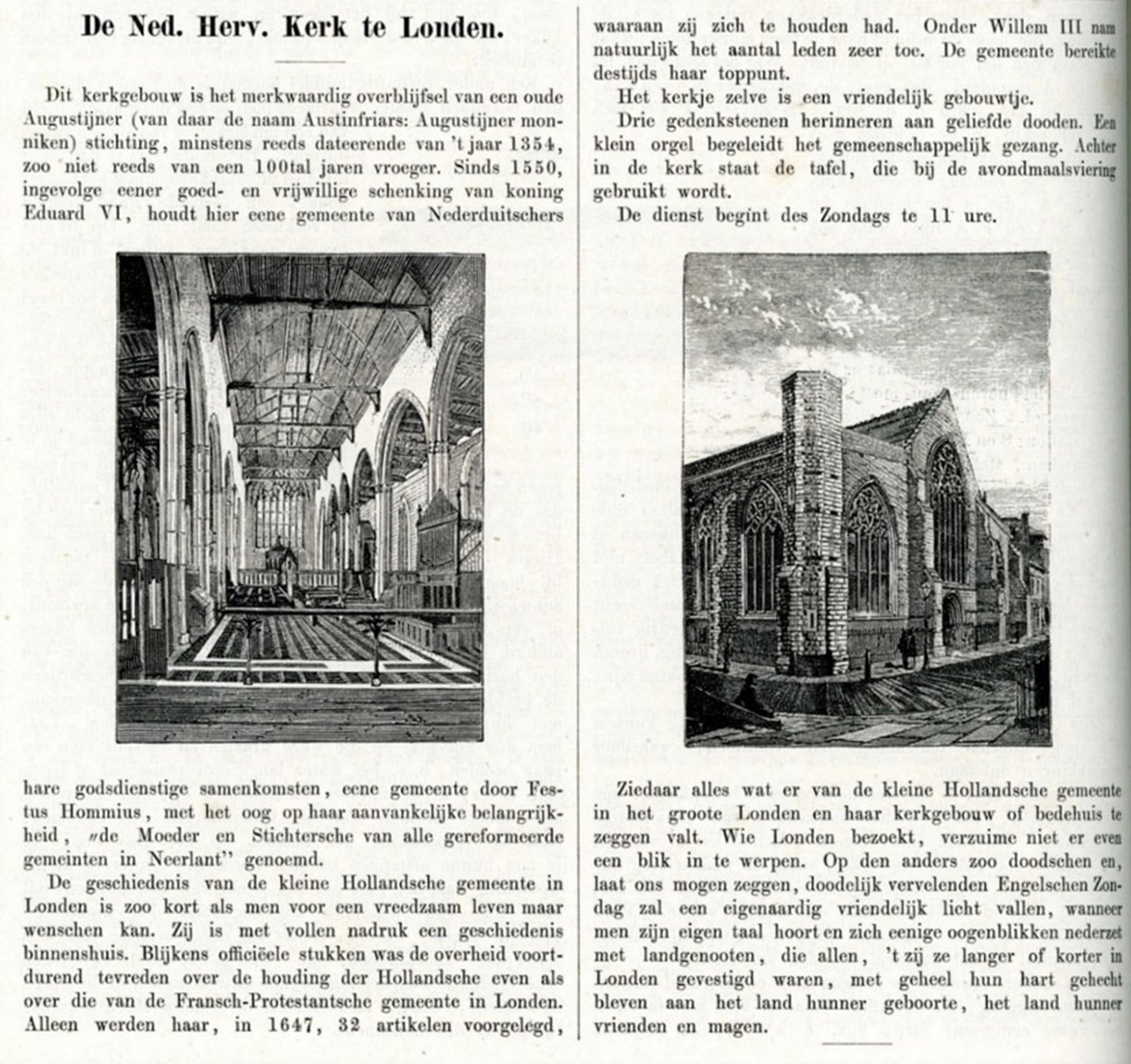
The Netherlands Reformed Church in London
Eigen Haard, 7 July 1877
We know that Van Gogh was an occasional or possibly even a regular reader of this weekly magazine, since he mentions other articles from it in letters he wrote in April 1877 and March 1883.
Van Gogh’s drawing is very similar to the Eigen Haard illustration, with the church shown from exactly the same angle and with the same perspective. But there are a few changes, as De Brouwer points out: “The format of Van Gogh’s drawing is horizontal rather than vertical like the engraving, creating additional space on the right, which he filled as he saw fit with a small tree and a lamppost. He omitted the small figures in the foreground and, rather than allowing the wall of the church to run to the edge of the paper on the left, he cut his composition off just past the second window.”
De Brouwer found further evidence that Van Gogh had used Eigen Haard. Beneath his drawing Van Gogh wrote a short text, which translated reads: “This little church is a noteworthy survival of an old Augustinian foundation (Austin Friars) dating from at least the year 1354 if not a hundred years earlier. The Low German [Dutch] community has held its religious services here since 1550, thanks to a voluntary donation of Edward VI.” This text seems to be a summary of the first two paragraphs of the accompanying Eigen Haard article.
What happened to Vincent’s drawing?
An inscription on the reverse records that he gave it to his eldest sister Anna, either enclosed in a letter or in person. We know that on 9 July 1877, just two days after the Eigen Haard article was published, he wrote to congratulate her on news of her engagement, and it could have been then that the drawing was sent, although this remains speculation. Anna had stayed in England in 1874-76, so she might well have visited the Dutch church.
In 1914 Anna gave the drawing to a friend, Jakob Nieweg (1877–1955), a pastor and artist. His heirs donated it to the Van Gogh Museum on its foundation in 1973. As a work on paper it would fade if exposed to too much light, and so for nearly all of the past half century it has been kept in the museum’s storeroom. It is a small work: the paper is 17cm wide and the actual image is just over half this width.
What does it tell us about his development as an artist?
The drawing dates from the summer of 1877, later than previously assumed. More significantly, he copied it from an illustration. His version is slightly larger than the magazine image, which means it was drawn freehand, rather than traced. In summary: Van Gogh’s finest early drawing was not done between the ages of 21 to 23, but at 24; it was a copy, not drawn in front of the motif.
When it comes to drawing, Van Gogh was more of a late developer than we had assumed. But this makes it even more astonishing that he was able to develop into a highly skilled draftsman just over a decade later, when he was in Arles in 1888, aged 35. Trees, Montmajour (July 1888), currently on display in the National Gallery’s exhibition Van Gogh: Poets & Lovers (until 19 January), is just one example.
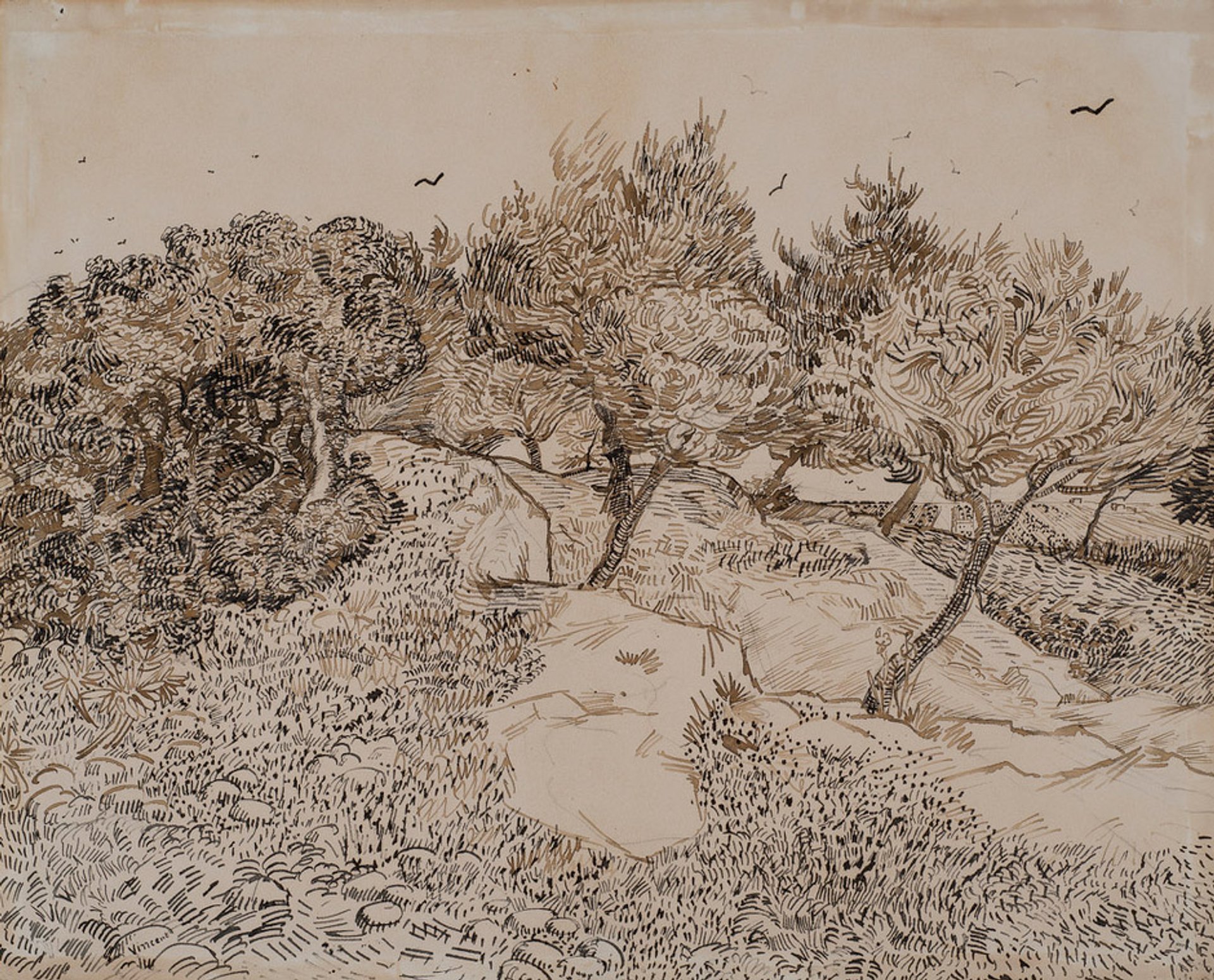
Van Gogh’s Trees, Montmajour (July 1888)
Musée des Beaux-Arts de Tournai
As for Austin Friars, it was bombed in 1940, during the blitz. It was rebuilt in 1954, in quite a different form, but still serves as the Dutch church and cultural centre.





